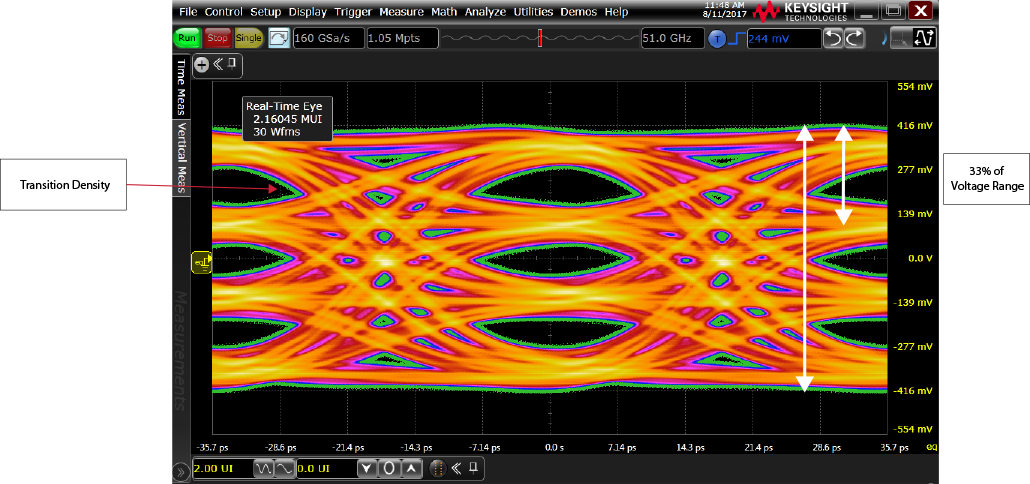4.1. Challenges in Analyzing PAM4 Signals
- Sampling Point: Finite rise times and different transition amplitudes create inherent ISI and make clock recovery more difficult. Consistent across all oscilloscope vendors, but quantization error plays a role when you take PAM4 measurements versus NRZ. Transition times of the PAM4 data signal can create significant horizontal eye closure due to higher transition density. The following figure shows the transition density.
- Noise Tolerance: Instead of having the full amplitude range, there is only 33% of the amplitude because the voltage range is divided into four levels (refer to the following figure). Lower PAM4 insertion loss compensates for the 9.5-dB loss in SNR.
Because the eye height for PAM4 is 1/3 of the eye height for NRZ, SNR loss = 20 * log10(1/3) = ~9.5 dB. When other non-linearity is included, it is approximately 11 dB.
- Non-Linear Eyes: System margin bottleneck lies with the worst eye. Non-linearity starts right at the TX output, and is composed of RLM loss + SNDR loss + other losses like SNDR (ISI). For more details, refer to the Eye Linearity section.
Figure 24. Scope Capture of PAM4 Signal


Related Information